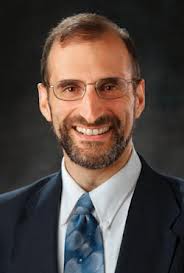“The most abundant resources that we possess amongst the 1.5 million nonprofits in the United States are passion and knowledge, yet our most scarce resource is collaboration.”*
~ Adam Braun, businessman & philanthropist
Partnership and collaboration can make the world go round. When we enter into partnerships, we can often see the positive outcomes of our efforts multiplied many times over.
 That’s why collaborative partnerships are a key guiding principle driving the work of Kaiser Permanente’s Thriving Schools. Pairing our expertise and organizational assets with that of our partners offers the opportunity to reach farther and deeper to better influence the health of schools in our communities.
That’s why collaborative partnerships are a key guiding principle driving the work of Kaiser Permanente’s Thriving Schools. Pairing our expertise and organizational assets with that of our partners offers the opportunity to reach farther and deeper to better influence the health of schools in our communities.
As part of Thriving Schools, Kaiser Permanente is working with many partners to create a culture of health in schools. One key partner is the Alliance for a Healthier Generation, an organization with a strong history of making schools the healthiest they can be.
The Alliance’s Healthy Schools Program is an established effort focused on bringing about the specific changes that schools need to become healthier environments to support healthy eating and physical activity– things like making cafeterias healthier, improving health education and physical education programs, and supporting student and employee wellness in schools. The Healthy Schools Program currently serves more than 18,000 schools, and through the partnership with Kaiser Permanente, that effort will now reach hundreds more schools. Both the Alliance and Kaiser Permanente bring unique assets and key relationships with schools and communities that can support student and staff wellness in fresh and tangible ways.
Thriving Schools recently had the pleasure of speaking with Howell Wechsler, chief executive officer for the Alliance for a Healthier Generation, to learn more about his passion for school health and how he sees the work of the Alliance and their partnership with Kaiser Permanente as an important step in supporting the health and well-being of the next generation.
[divider scroll_text=””]
Thriving Schools: We know that you’ve assumed a new leadership role as CEO of the Alliance for a Healthier Generation in May 2013. Share with us a bit about your background with school health? How do you hope to continue this work in your new role?
Howell Wechsler: I’m delighted to be heading up the Alliance for a Healthier Generation. I’ve been watching this organization grow since it was started as an initiative of the Clinton Foundation and the American Heart Association back in 2005, and I think it’s one of the finest organizations working in the space of school health.
Prior to my role here, I served at the Centers for Disease Control and Prevention for 18 years. For nine of those years, I led the Division of Adolescent and School Health at CDC. This is the unit that supports school health programs across the country. DASH collects a lot of data on the health behaviors of young people and on the policies and practices of schools and uses that data to expand our knowledge about what policies and practices are most effective. DASH serves a critical role in delivering science-based guidance to schools and informing effective school health programs.
During my time at the CDC, I also served as a lead scientist on obesity and nutrition/physical activity issues, examining the role that schools play in this area and helping develop the CDC guidelines on what schools could and should be doing around obesity prevention.
TS: Could you tell us about the Alliance’s framework for developing healthier school environments?
HW: The Alliance provides schools with a science-based framework founded upon the research and guidelines offered by the CDC and other organizations. The framework is reviewed on a regular basis by a scientific board of advisors. At the heart of the framework is a focus on seven categories of wellness: healthy school meals, healthy vending, health education, employee wellness, physical education, student wellness, and policies and systems.. Now knowing the right thing to do doesn’t mean that it’s easy to get there. So the Healthy Schools Program also guides schools through a Six-Step Process of incremental improvements that ensures gradual and lasting change. We combine the two parts – the most effective things schools can do to support wellness and the recognition that change is a social process that needs to be owned by the schools.
Change isn’t something that can be imposed from above. It can’t be dependent upon one-shot regulation changes or one charismatic teacher or principal who moves those changes forward. It’s about activating systems to embrace change. While state and national standards that support school health are definitely good things, people in schools have to own the change process as well. It may take more time, but it’s much more meaningful and sustainable.
TS: How do schools become part of the Alliance’s work?
HW: There are many ways in which schools can become part of the Alliance’s Healthy Schools Program. Some people get started by simply going onto our website to sign their schools up and take on the process directly as we offer a variety of virtual assistance opportunities, including trainings and a customer support center. But others benefit from in-person guidance and support.
The Alliance has program managers now in more than 35 states. They are essentially field agents who meet with school districts and educate them about the Alliance’s framework and what resources are available to them. Many times, our program managers work through the school district offices. Other times, they may speak at conferences and meetings and introduce the Alliance’s work through those avenues.
TS: Where do you see the greatest opportunities about improving access to healthy eating and physical activity in the upcoming school years?
HW: I’m really excited about the new regulations that just came out from the U.S. Department of Agriculture regarding snack foods at school and the need to shift those to healthier options. We truly have an opportunity to get the junk food and liquid candy out of schools once and for all. It’s exciting because parents work so hard to keep their kids healthy, and now that work is made easier for them because young people won’t be faced with so many unhealthy options
There’s also a lot of work being done to improve the nutritional quality of school meals and the quality of physical education. There are so many brilliant educators implementing great ideas in these areas and it’s exciting to see those ideas get shared.
I am particularly excited to see the work that is being done around integrating physical activity into the day. Many schools are working to integrate physical activity breaks in the classroom, not just before and after school. It’s so important to give kids the opportunity to move and the work being done here really highlights how movement is key to helping kids learn.
TS: The Alliance has just entered into a partnership with Kaiser Permanente, what excites you about partnering with Kaiser Permanente and the work you’ll be doing together?
HW: We love working with the folks at Kaiser Permanente. We find them to be smart, strategic, and really focused on what the evidence shows to be effective. Our counterparts at Kaiser Permanente really care. They are people with big hearts, but they are also really focused on outcomes. They’ve added tremendous insight and focus on a rigorous evaluation of what is working and using that to drive the work that we’re doing together. Coming from my scientific background, I just love that. We want to make a difference in the lives of kids affected by our programs, but we also are working together to learn things for the future so we can make progress and make a difference for the next generation.
For more information the Alliance for Healthier Generation Healthy Schools program, visit www.healthiergeneration.org.




